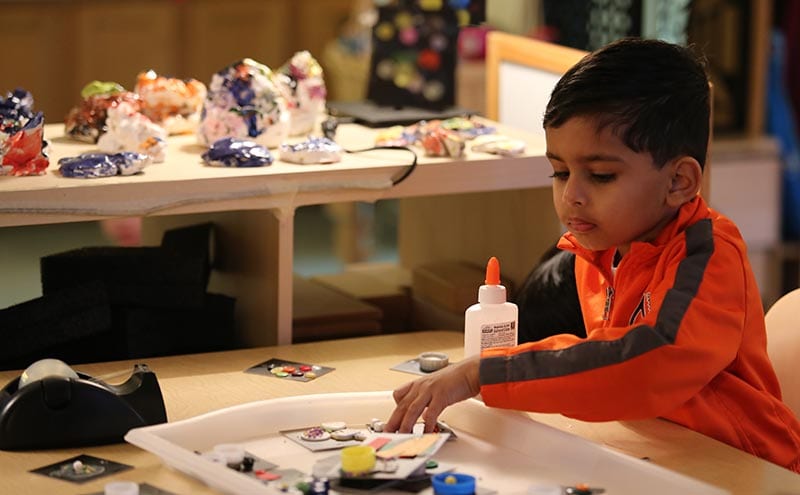
Preschool Environment with Non-traditional Materials
A Preschool Environment Acts a Teacher
In my Preschool classroom much thought is given to the use of space and materials. I strive to create rich preschool environments in which children can find possibility, and, at the same time, purpose. This can be a delicate balance.
Young children have an infinite capacity to explore. Additionally, they have boundless imagination. When coupled together, these two traits can lead to endless possibilities. The educators in Reggio Emilia, Italy have given particular consideration to the role of the environment. Lella Gandini writes, “The environment is seen here as educating the child; in fact it is considered as ‘the third educator’ along with a team of two teachers.”
How Can a Preschool Environment Inspire Creativity?
An environment which itself educates is one which forms a strong relationship with children. This environment is complex, where every space has a meaning and a purpose. The children have belonging and ownership of the space. It is full of materials which support the skills that they already have and which provoke them to think in different ways as well. For example, a block area might be stocked with familiar materials – such as blocks, animals, and cars – but might also contain recycled materials, fabrics, tiles, styrofoam, and more. These non-traditional materials support the innate creativity of preschool students because their usage is not predetermined by adults. They are inviting, encouraging the preschoolers to think not in terms of the “right and wrong” way to use a material, but rather in terms of what a material could be. When materials have these possibilities, the creativity of children is unleashed.
An Engaging Preschool Environment At Home
So what could this look like at home? There are many materials around your home that can be used to enrich preschool environments. A walk in the park might yield some beautiful sticks or rocks which can be brought into a play space. Old soda bottles can be cut up and (briefly) melted in an oven, rounding the edges and creating translucent marvels. Home construction projects might have leftover tiles or scraps of wood. Flashlights or even a light table can add elements of wonder. Old buttons and jewelry can be made into exquisite collages, alongside bottle caps, corks, and pebbles. Hand-me-down clothes, old shoes, and fabrics can make a dynamic dress-up area. Don’t throw away that unwanted phone book and old cell phone; it might be perfect for a home office. The possibilities are endless…
I regularly stop to reflect on how my preschool classroom spaces and materials are being used, and consider what I might do to create more complexity in the environment. I invite you to do the same.
Stay tuned next week for some more concepts and strategies from our Moorestown Preschool program.
Beginnings at MFS is the Moorestown Friends School Early Childhood Program (Preschool, Prekindergarten, and Kindergarten). The Beginnings Blog is intended as a helpful tool for parents and guardians of young children, examining important ways in which children find meaning, in their lives and in their education.
Author Garrett McVaugh is the Beginnings at MFS Half-Day Preschool Teacher. Along with his Teaching Assistant Pauline Williams, he guides some of the youngest MFS students through their first year of school. A graduate of Haverford College, Garrett has been an early childhood educator for over a decade. Prior to MFS, he was a teacher at Preschool of the Arts in Madison, WI. Prior to living in Wisconsin, Garrett spent eight years teaching at St. John’s Episcopal Preschool in Washington, DC.
Schedule a Visit with Us
Learn more by a visit in person and meet with one of our excellent Early Childhood Program teachers.

